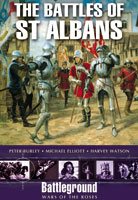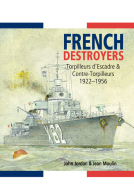V & W Destroyers (ePub)
A Developmental History

File Size: 66.7 MB (.epub)
Pages: 160
ISBN: 9781526774835
Published: 30th July 2020
| Other formats available | Price |
|---|---|
| V & W Destroyers Hardback Add to Basket | £18.50 |
The revolutionary battleship Dreadnought of 1906 brought together in one package the new technology of oil fired boilers and steam turbines, and all-big-gun armament; in doing so she rendered all other capital ships then afloat completely obsolete. Ten years later the V&W Class did to destroyers what the dreadnoughts had done to battleships: they set a completely new and higher standard of technology and were a cut above anything that had come before.
They were, however, less revolutionary than evolutionary and in this new book John Henshaw takes the reader through all the developmental stages with a detailed history of the step-by-step lessons that were learnt, not all of which were fortuitous. In one package the Royal Navy finally acquired a hull that possessed not just good sea-keeping capability but one that was able to carry heavier armament without any adverse effects. Range and speed were commensurate with their size while the super-firing guns, fore and aft, could be deployed in all weathers for a four-gun broadside. The V & W design set the trend for all destroyer design for the next two decades and, indeed, the basic layout of destroyers stayed the same long beyond that. The formula of a raised foredeck and super-firing guns fore and aft continued in the Royal Navy until the Battle Class of 1944 and in the United States Navy until the Fletcher Class of 1943. That the V & Ws served on through World War II in various forms is a testament to the soundness of the basic concept, their adaptability and strength. The V stood for Venerable, because they certainly proved that, and W for Watershed, because they were truly a turning point in destroyer design.
The narrative is superbly illustrated with forty-five detailed profile and deck plans, for which the author is so well known, of the principal early British destroyer types and illustrates all the V&Ws through to the end of World War II, including some conversions that were considered but never completed. The book also looks at the influence of the basic design on the destroyers of other navies.
This new book, which will appeal both to naval historians and modelmakers, brings together under one cover a narrative that is comprehensive in its scope, well researched and elegantly supported with detailed line drawings and selected photographs for the period 1890–1945.
If you are a British naval enthusiast you will find this book of interest, and perhaps the very excellent drawings by the author become this title’s strong suit.
Nautical Research Journal
Recommended.
As a wide ranging work it could help ship modellers and was clearly a labour of love for the author who has contributed a useful volume of naval history.
The Society of Model and Experimental Engineers
About John Henshaw
JOHN HENSHAW is a retired chartered surveyor, educated at Wesley College and Melbourne University. He spent most of his working career designing and constructing buildings of all types from domstic houses to office buildings. He has always had a love of the sea and owned several yachts, cruising Australia’s North East Coast extensively. He is also an accomplished marine watercolour painter and ship modeller and a fine technical draughtsman. His beautiful linework is a highlight of this book.

















